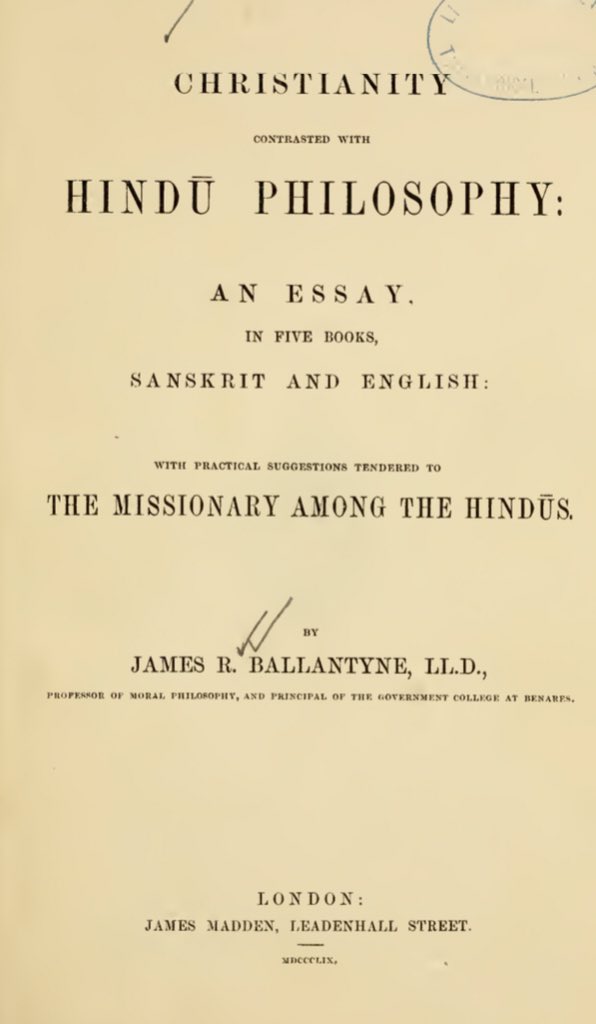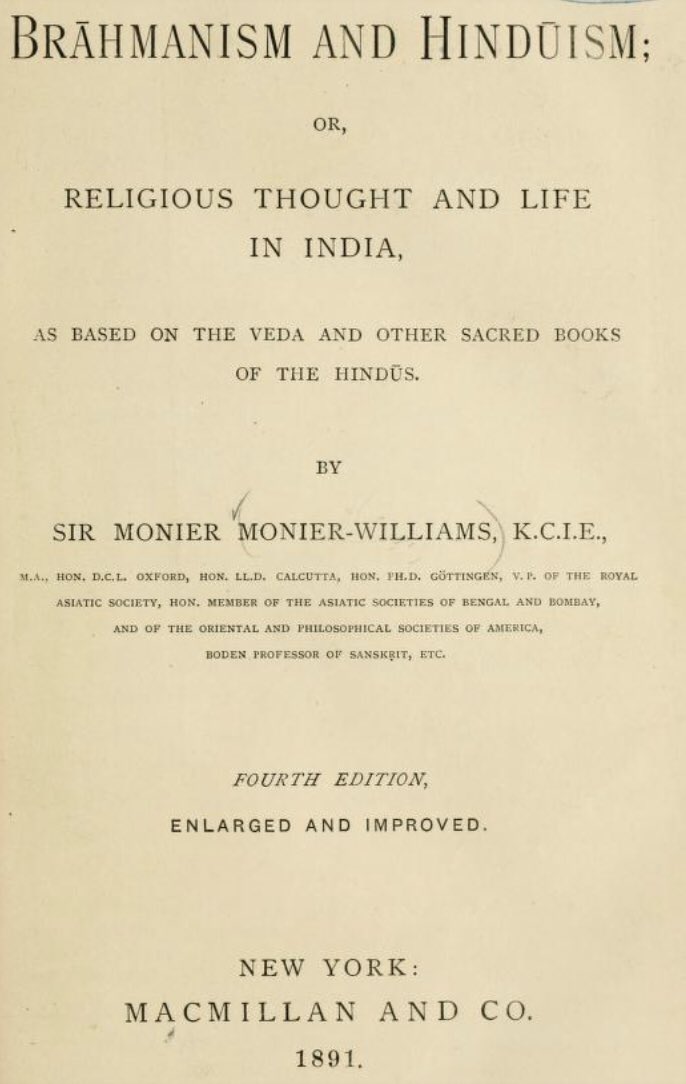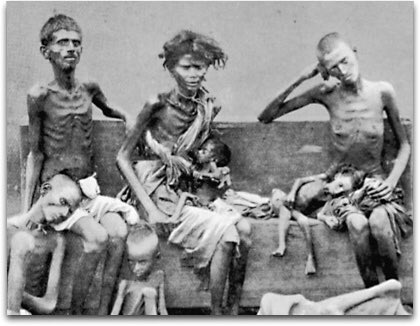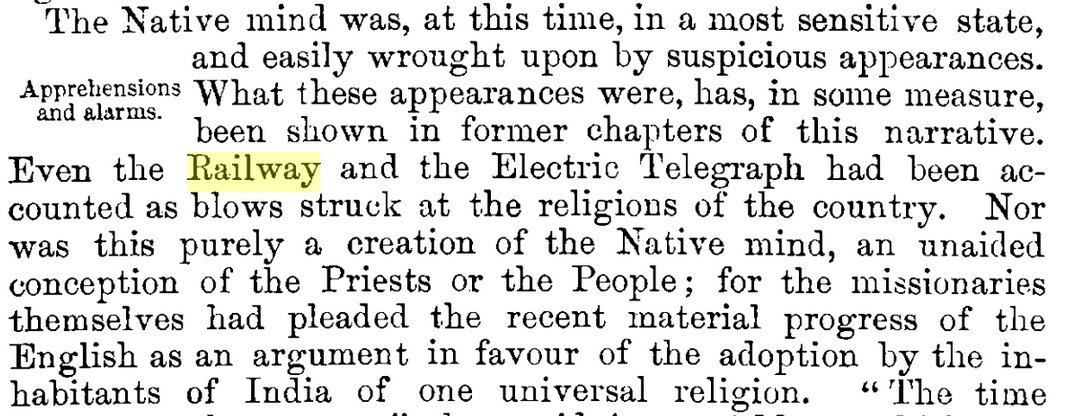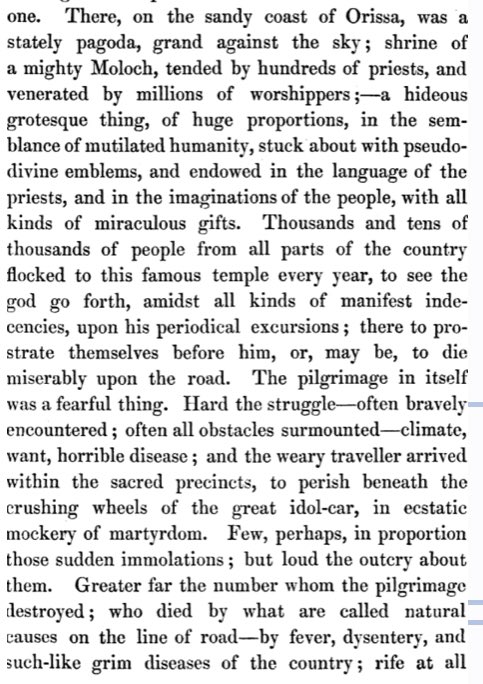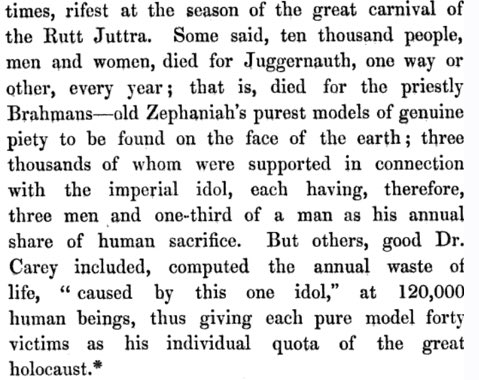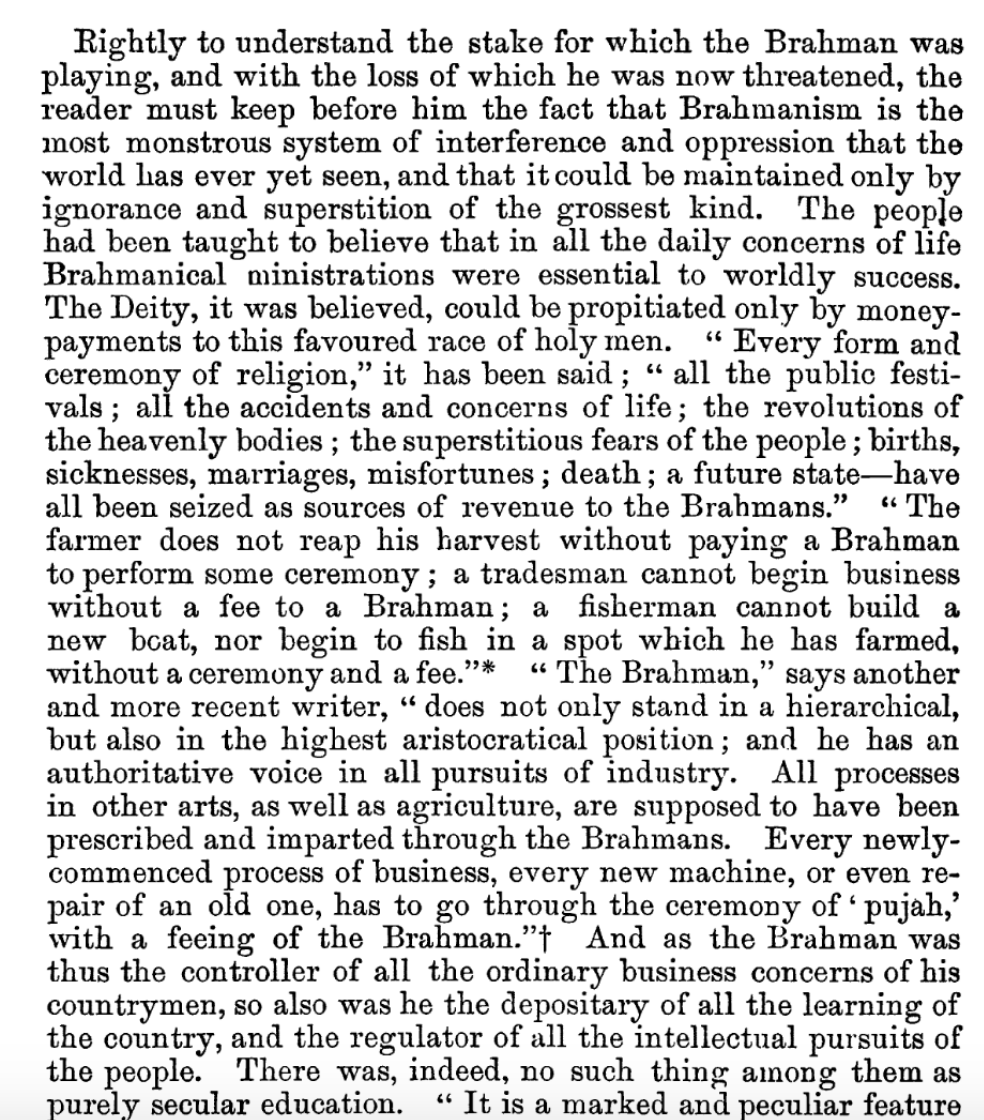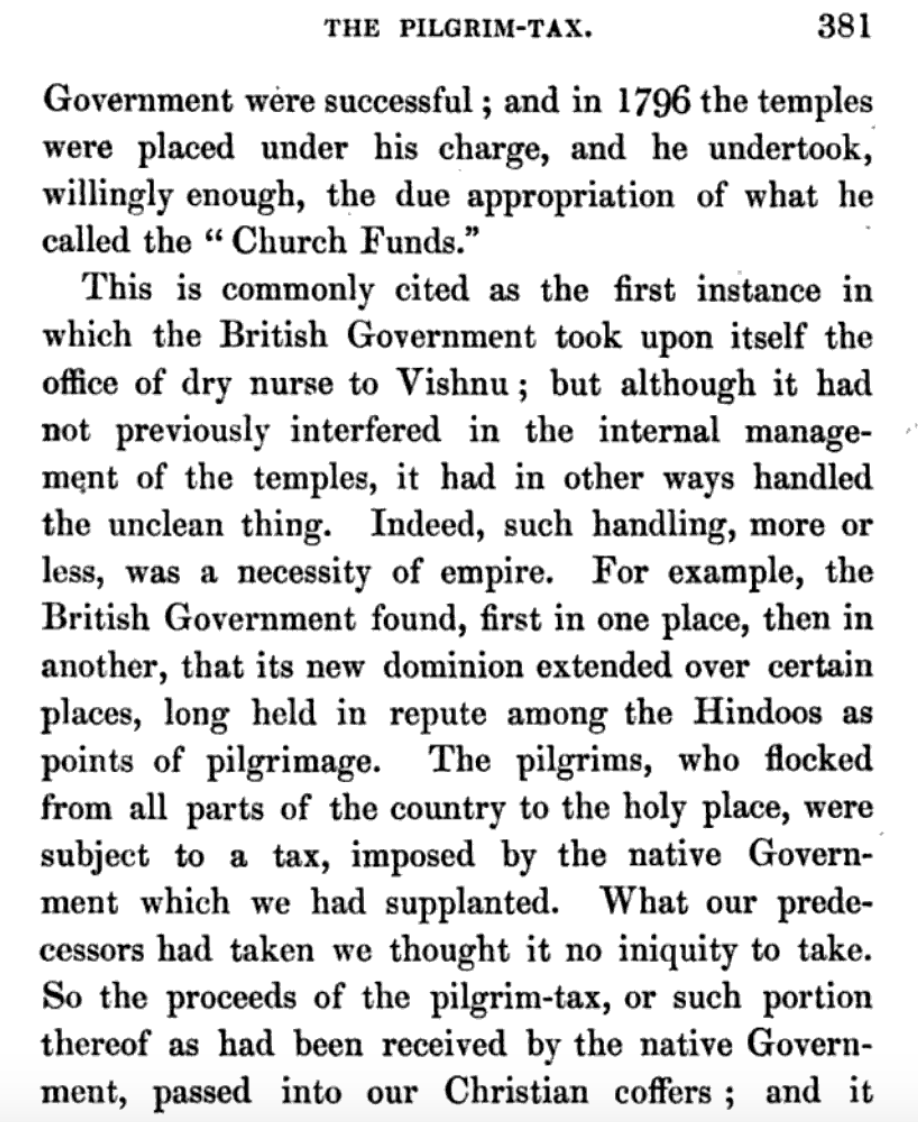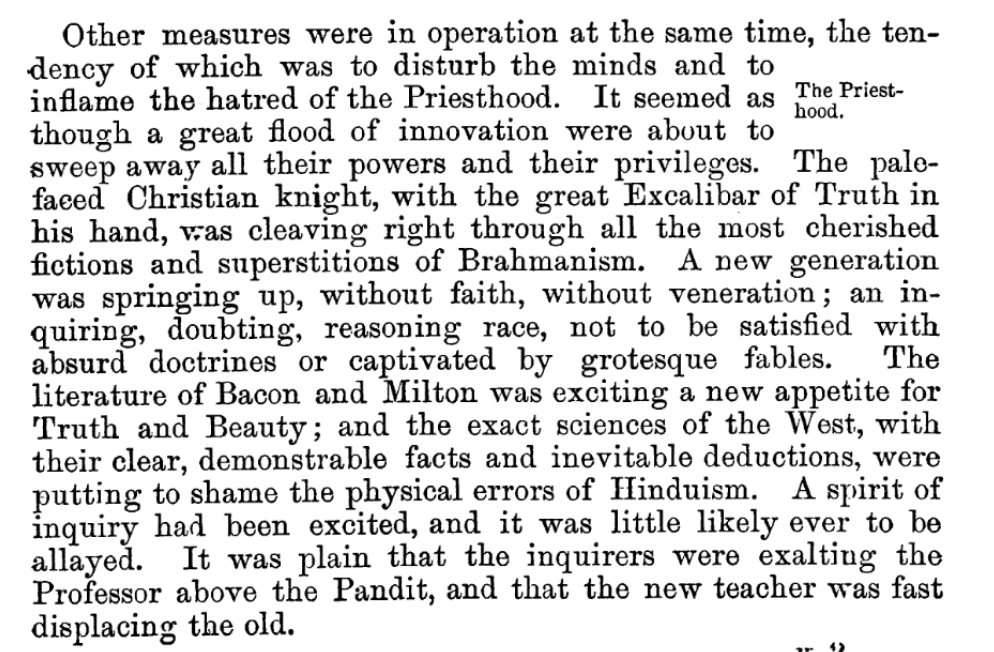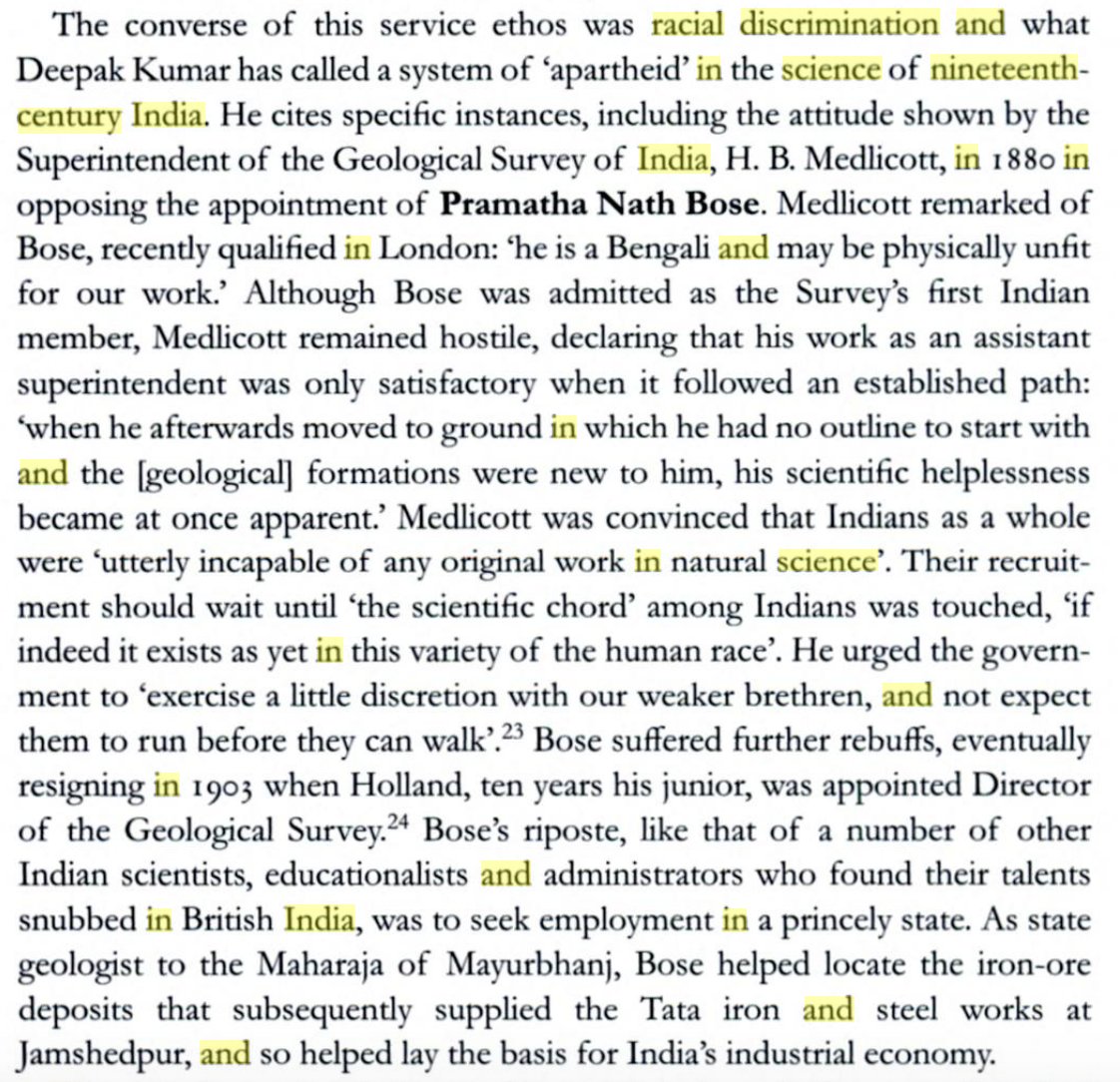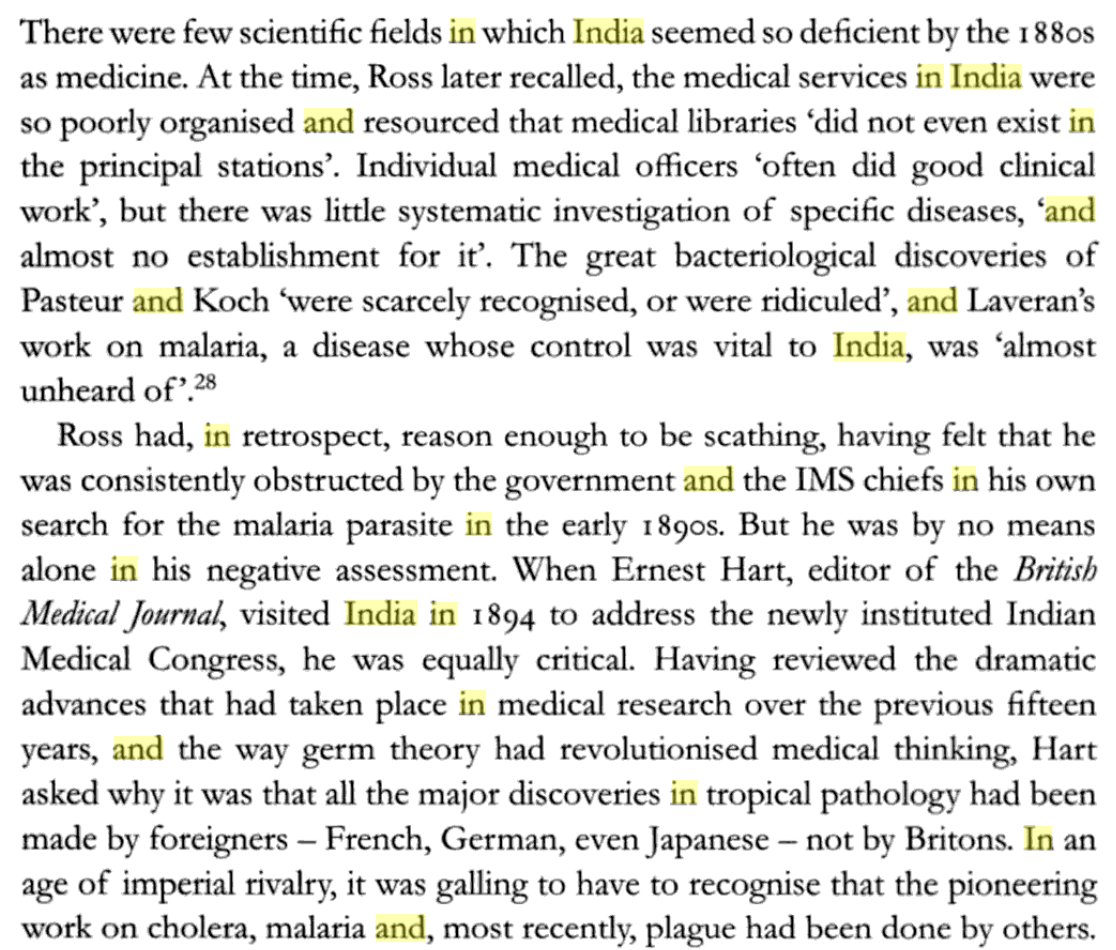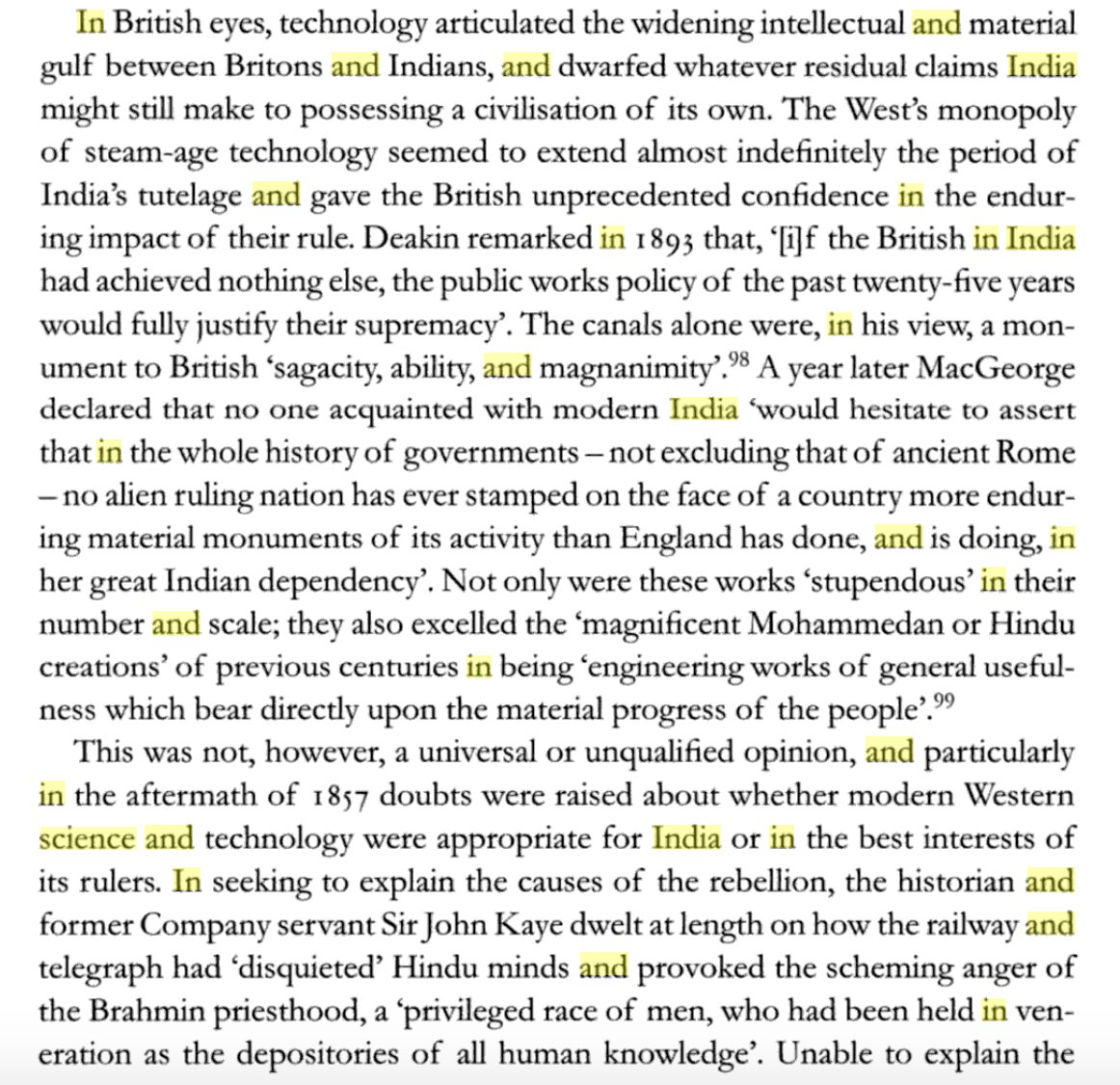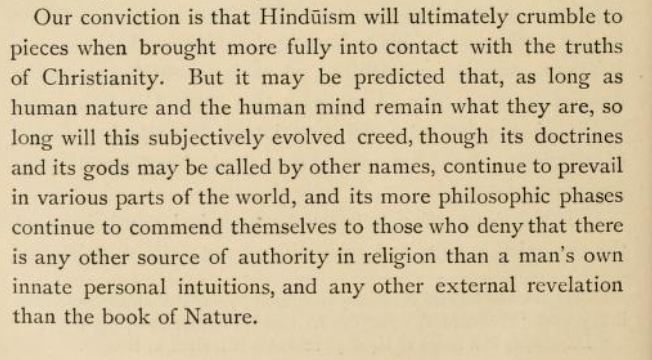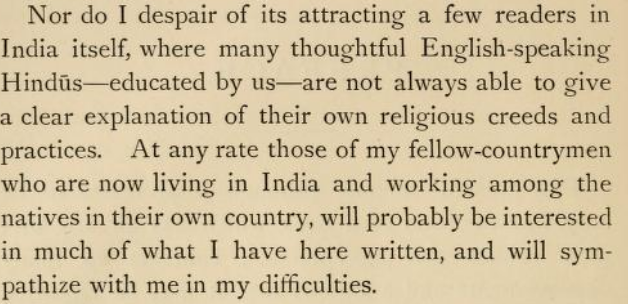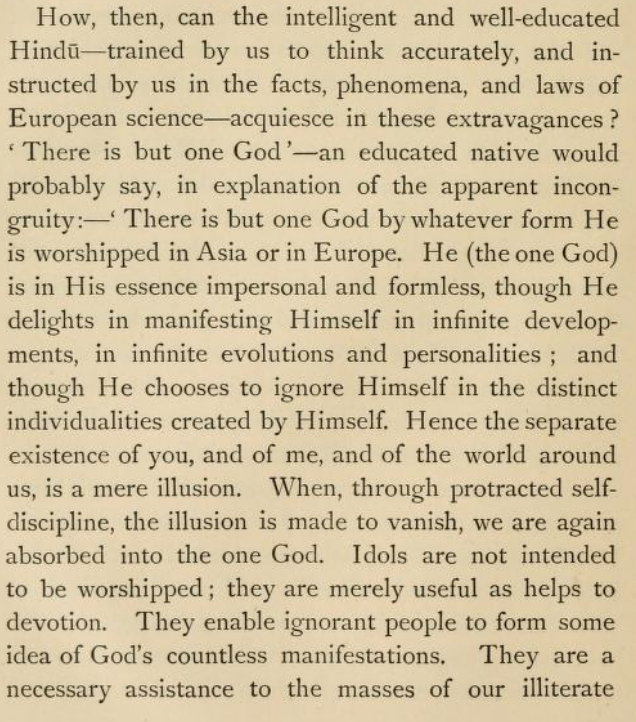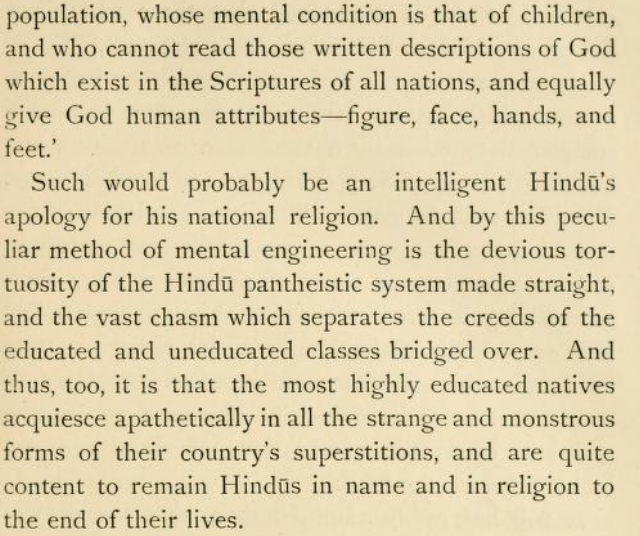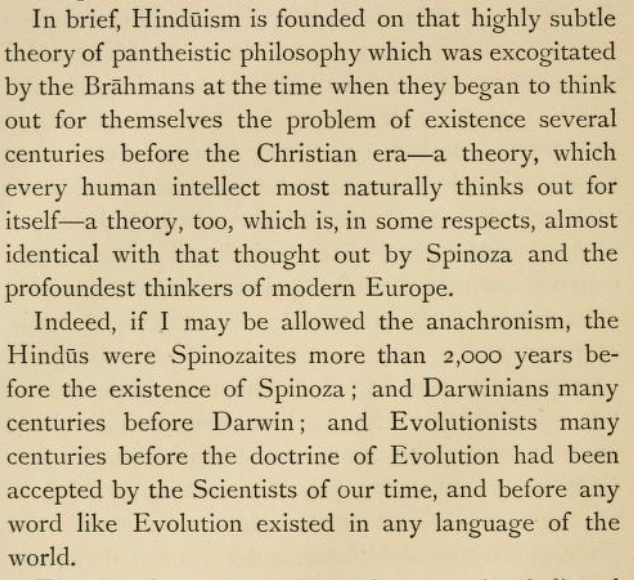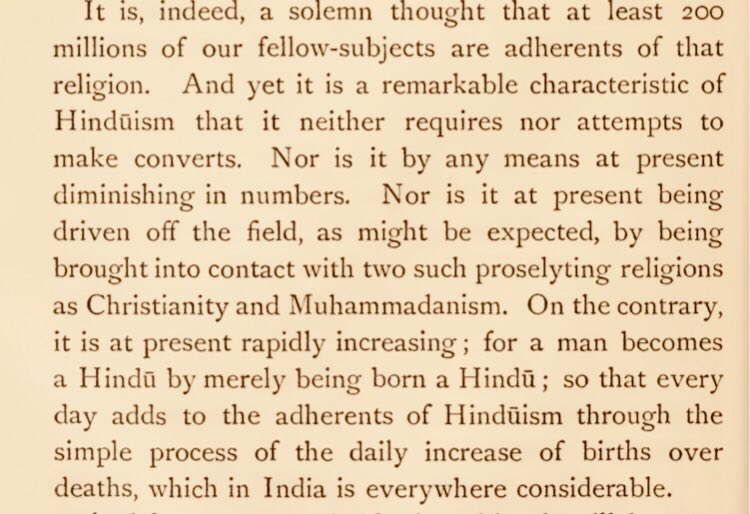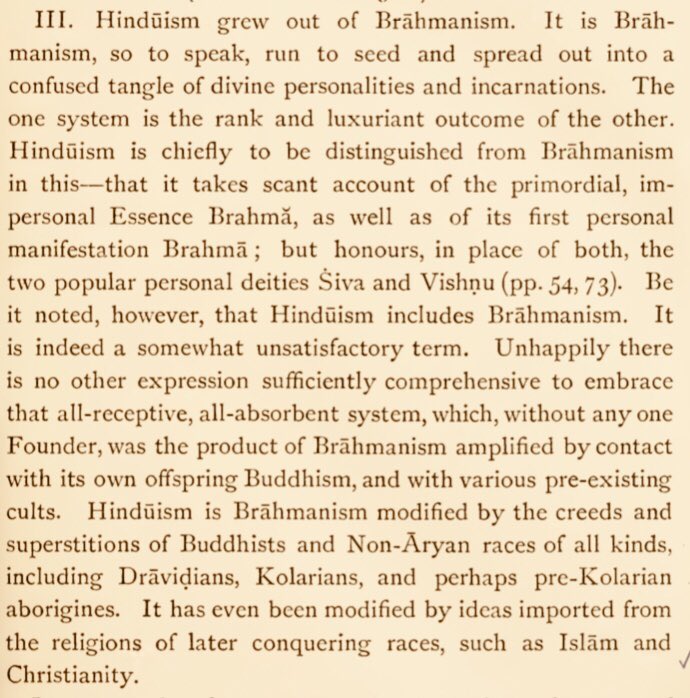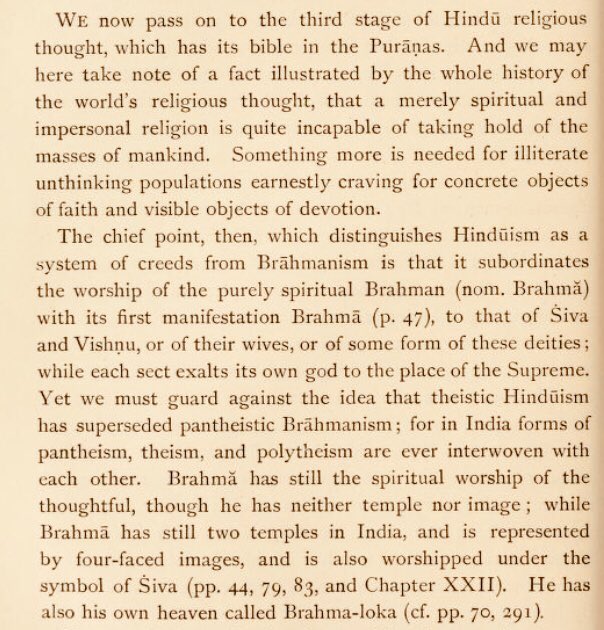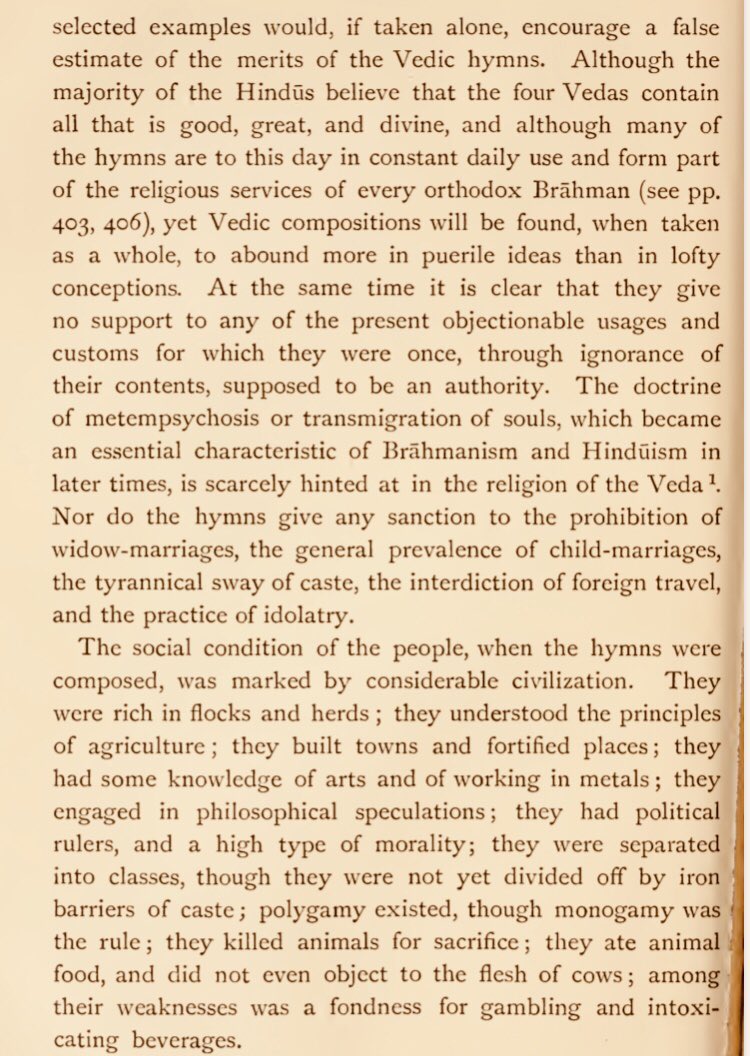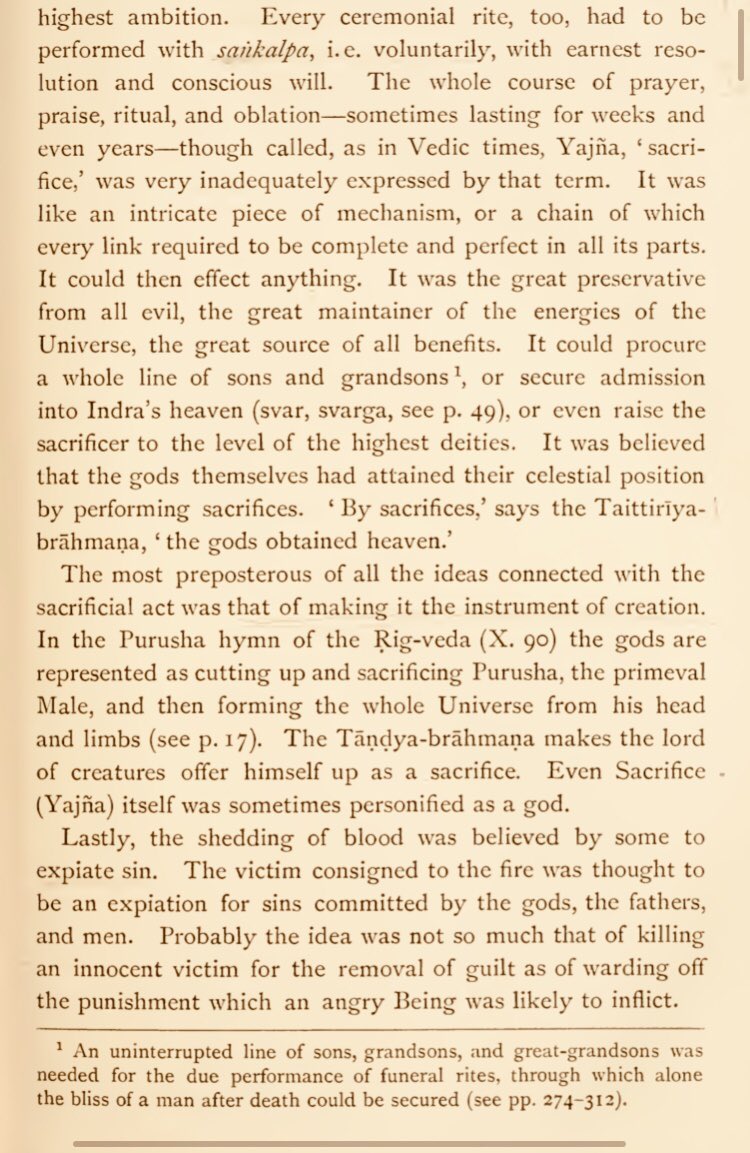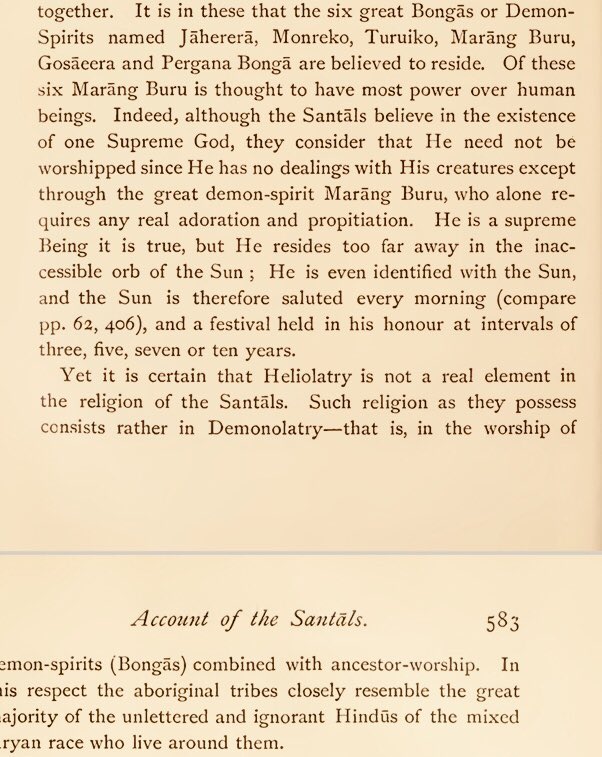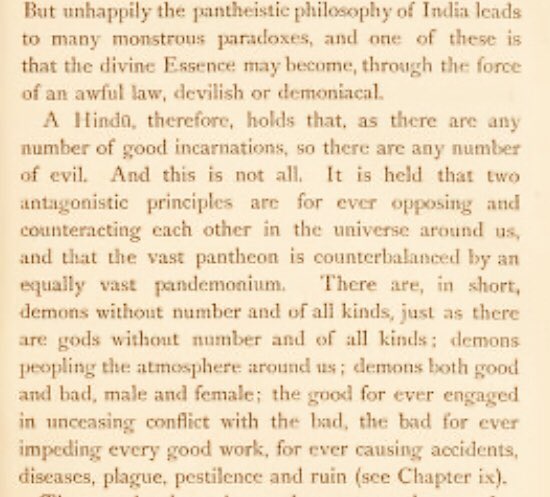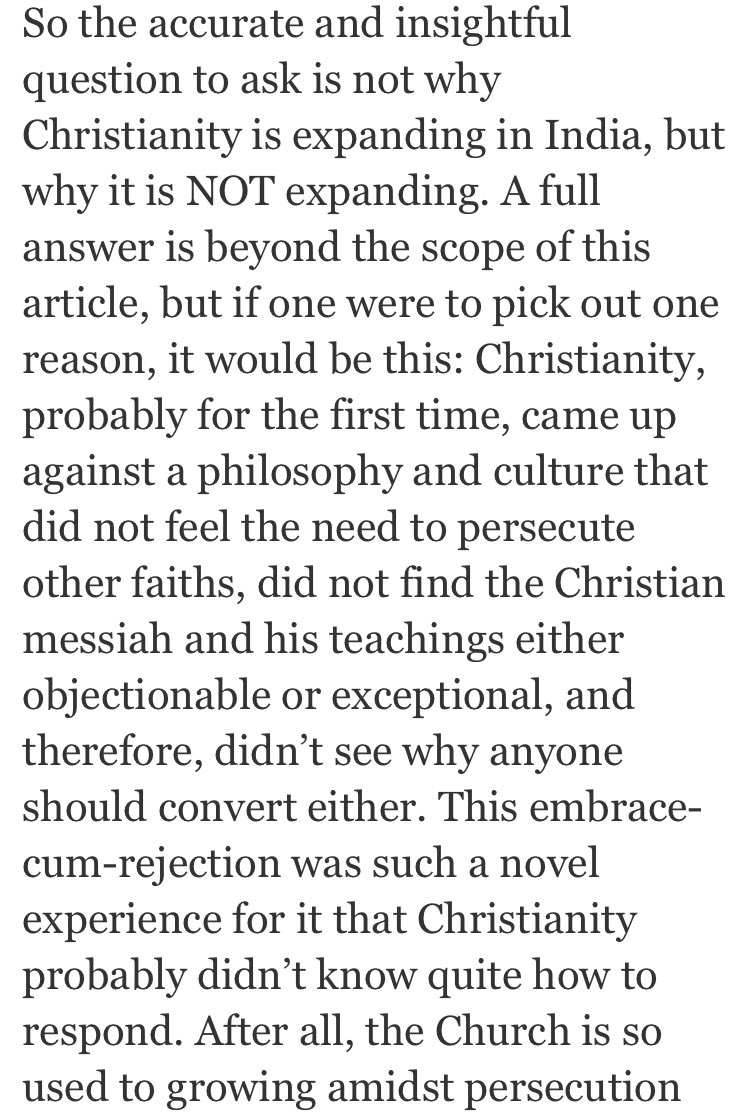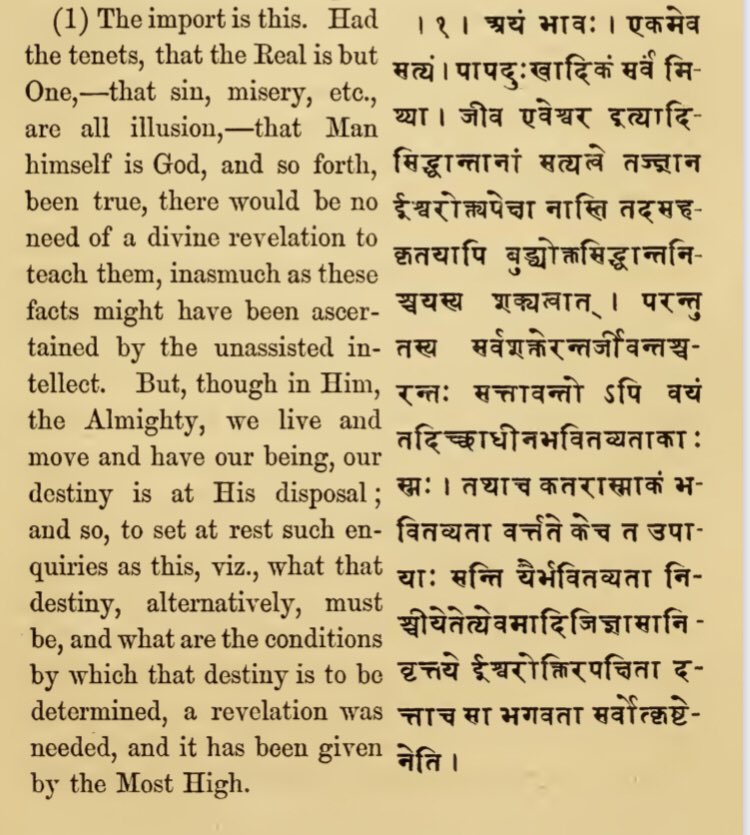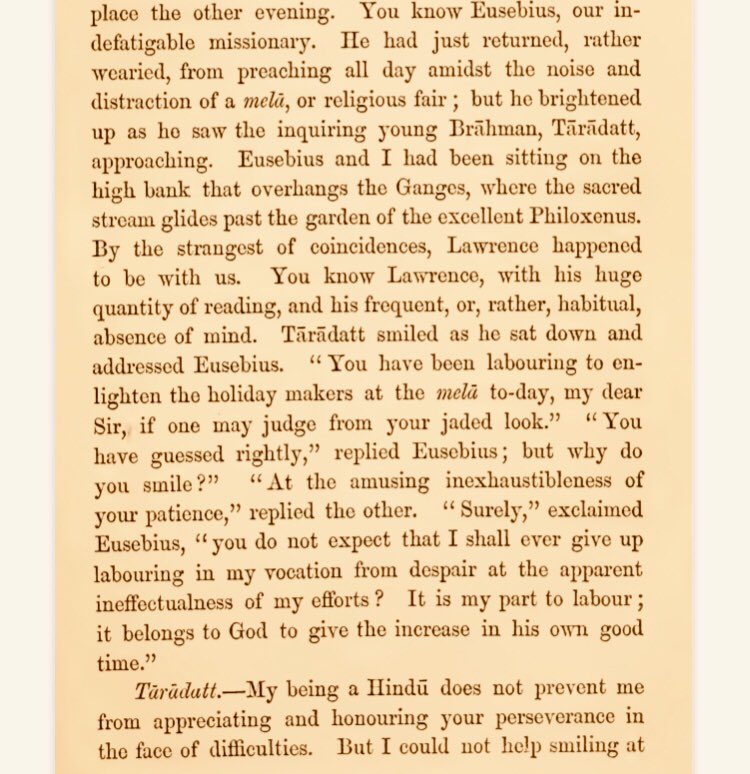In this thread, I will discuss the proselytization of Christianity in British India, and the evolution of strategy from James R. Ballantyne to Monier Williams and beyond. I will argue how Antibrahminism became central for this, and how atheism/communism became a helping hand.
I will critically read and analyze the book by James Robert Ballantyne “Christianity contrasted with Hindu philosophy”, published in 1859. Ballantyne was a very well read scholar who translated the Sūtra texts of Hindu Darśanas like Sāmkhya, Nyāya, Mīmāmsa and Vēdānta.
Earlier, I analyzed Ballantyne’s 1852 work “Synopsis of science in Sanskrit and English” which is deeply coupled with his later book on Christian apologetics, which can be read here online.
https://archive.org/details/in.ernet.dli.2015.217410
https://archive.org/details/i... href=" https://twitter.com/vakibs/status/1265253031182032899?s=21">https://twitter.com/vakibs/st... https://twitter.com/vakibs/status/1265253031182032899">https://twitter.com/vakibs/st...
https://archive.org/details/in.ernet.dli.2015.217410
In parallel, I will critically read and analyze the book of Sir Monier Monier-Williams “Brahminism and Hinduism: Religious thought and life in India”, which was published just a couple of decades later in 1891.
This book can also be read online: https://archive.org/details/brahmanismhindui00moni/page/n9/mode/1up">https://archive.org/details/b...
This book can also be read online: https://archive.org/details/brahmanismhindui00moni/page/n9/mode/1up">https://archive.org/details/b...
The second half of the 19th century is one of the darkest periods of Indian history. Several million Indians perished every decade due to British engineered famines and pandemics. Many were kidnapped and shipped off as slaves, known by the euphemistic term of “indentured labour”.
After the brutal massacre in 1857, the British possessions were brought directly under the rule of Queen Victoria, given the title of “Empress of India”. A fat lady stuffed with hypocrisy and heartbreak, she perfectly symbolized the British rule that put India to starvation.
Within the 2nd half of the 19th century, the literary depiction of Indians in European (and especially British) media constantly degenerated, from a position of equals to European’s own pagan past (like the Greek philosophers) to a racially inferior scum who ought to be despised.
Under the direct British rule of the 1800s, the share of India in global economy dropped from 20% to 2%. The economic surplus of India was looted and millions of Indians were put to starvation and death. At the same time, British military historians were rewriting Indian history.
The first of the wretched British historians was James Mill, who started mythologizing for East India Company. But the most horrific and racist distortions came later, from the pen of John William Kaye, the military historian of the 1857 mutiny and the promoter of Antibrahminism.
The British policy for reducing India to wretched poverty was intentional, and meant to destroy the self confidence of Indians. The same policy of engineered famine and hunger was deployed earlier in Ireland and later in South Africa against the Boers. But India faced the worst.
Apart from delivering poverty and death, the British also created a monumental trove of racist literature on India’s traditions, scientific heritage and social customs. These are in official documents, survey papers and books that still serve as reference material for India!
The previous policy of scholars like James R. Ballantyne to engage Hindu scholars as equals in a debate (and ultimately seek to convert them to Christianity) gave way to ridiculing them and dismissing even the need for a debate.
The culmination is the work of Monier-Williams.
The culmination is the work of Monier-Williams.
There are 3 reasons why this happened:
1) The arguments of scholars like Ballantyne were found to be wanting.
2) Certain scientific discoveries (e.g evolution) made the Christian position tenuous.
3) The need for intellectual brainwashing in the direct administration of India.
1) The arguments of scholars like Ballantyne were found to be wanting.
2) Certain scientific discoveries (e.g evolution) made the Christian position tenuous.
3) The need for intellectual brainwashing in the direct administration of India.
The British tried to compensate for this lack of intellectual argument for the conversion of Hindus (based on science or philosophy) with pomp in administration and parades, technological bamboozlement through railways and irrigation works, and sheer bullshitting about history.
This is John William Kaye in his history of the 1857 revolt, arguing how the technological artifacts like railways and telegraph demonstrate the inferiority of Hindu philosophical systems.
There is no longer a need for intellectual debate, as James Ballantyne acknowledged.
There is no longer a need for intellectual debate, as James Ballantyne acknowledged.
From Ballantyne calling even the scientific and philosophical scholars of Europe as the "Brahmans of Europe", we get John Kaye reprsenting Brahmans as a scheming and cunning obstacle to the spread of civilization.
The screenshot is from this book: https://books.google.de/books?id=jpxjXZL6rNsC">https://books.google.de/books...
The screenshot is from this book: https://books.google.de/books?id=jpxjXZL6rNsC">https://books.google.de/books...
In his book “Christianity in India: A historical narrative”, John Kaye calls Brāhmans of India as complicit in “human sacrifice”: each Brahmin priest of Pūri taking a quota of 3.3 to 40 human victims each year. He ticks all the racist bellwhistles while describing “Juggernauth”.
Just as the British were extracting the economic surplus of India and becoming insanely rich, John Kaye frames "Brahmanism" squarely in the role of the exploiter, sapping various fees from all economic activity. This is from his book on the military history of the 1857 revolt.
In fact, the British government in India was not only appropriating all economic surplus, it was also explicitly appropriating the money spent by Hindu pilgrims in temples, making it into "our Christian coffers", as stated by John Kaye in his 1859 book "Christianity in India".
This appropriation of temple funds is termed as "tolerance" of the British government (the same policy is continued by the Indian state to this day). John Kaye was eager to point out that this was instituted in an earlier era, when the British hold was not yet strong in India.
John Kaye also characterizes the earlier British efforts for translating European texts into Sanskrit by Ballantyne etc. as "disturbing the minds and inflaming the hatred of priesthood".
In fact, that debate has barely even started. But Kaye declares victory over the Brahmans.
In fact, that debate has barely even started. But Kaye declares victory over the Brahmans.
Such blatant racism against Hindus had a direct effect on the lives of Hindu scientists in the British Raj, many of whom were Brahmins. This incident from the life of Pramatha Nath Bose is recounted in the book "Science, Technology and Medicine in Colonial India" by David Arnold.
David Arnold also recounts how the British neglected the medical field in India. Vast numbers of Indians died due to this neglect and bad sanitary practices in British made slums, that spread pandemics like Malaria and Cholera. That was the status of science in British India.
The British Raj was a period of *increasing racism*, increasing religious chauvunism, and increasing scientific parochialism.
The British historians called this instead a period of "increasing tolerance" and gradual removal of British interference in India& #39;s religious affairs.
The British historians called this instead a period of "increasing tolerance" and gradual removal of British interference in India& #39;s religious affairs.
It is with this historical context that we need to read the books of Ballantyne and Monier-Williams, that appeared at the two ends of this half-century.
The book of Ballantyne is all but forgotten. The book of Monier-Williams (and those of John Kaye) have become academic dogma.
The book of Ballantyne is all but forgotten. The book of Monier-Williams (and those of John Kaye) have become academic dogma.
As soon as the British started directly administering India, there was the urge to distance themselves from the learning of India, and to discard any Indian pretensions for intellectual debate, without giving them any hearing.
This is from David Arnold& #39;s book, published in 2000.
This is from David Arnold& #39;s book, published in 2000.
When Hindus are termed intellectual voids, there is no reason to debate them or to study Hindu philosophy as an independent area.
Instead, Hinduism becomes a topic for anthropology, for listing various oddities. This is the principle of Monier-Williams "Brahmanism and Hinduism".
Instead, Hinduism becomes a topic for anthropology, for listing various oddities. This is the principle of Monier-Williams "Brahmanism and Hinduism".
As more and more Indians were educated in the British system imposed by Macaulay, this anthropological perspective on Hinduism becomes their very own self description of Hindus. This was stated at the very outset by Monier-Williams.
This strategy has succeeded phenomenally.
This strategy has succeeded phenomenally.
In the 1890s already, Monier-Williams described an envelope of the meek defense of Hinduism by those people who remain Hindu despite the education system. This is a crumbling defense, that poses no intellectual challenge to Christianity.
This is how most Hindus speak even today.
This is how most Hindus speak even today.
Monier-Williams anticipates any intellectual arguments from Hinduism, and reduces them to Europe& #39;s own developments that Christianity would overcome. Hindu philosophy need not be studied independently.
"Hindus were Spinozaites before Spinoza, and Darwinians before Darwin".
"Hindus were Spinozaites before Spinoza, and Darwinians before Darwin".
If Hinduism is intellectually irrelevant, why write about it?
Simply because Hindus exist as the subjects of her Majesty the Queen. Multiplying like rats, rotting in squalor, but still a part of the British empire. So Monier-Williams had the burden of writing books about them.
Simply because Hindus exist as the subjects of her Majesty the Queen. Multiplying like rats, rotting in squalor, but still a part of the British empire. So Monier-Williams had the burden of writing books about them.
Monier-Williams had the task of reducing Hinduism to anthropology, and would have done it as nonchalantly as other colonialist racist depiction of pagans anywhere in the world, but there is the inconvenient problem of the Hindu intellectual tradition with thousands of books.
So Monier-Williams creates an artificial wedge between the intellectual tradition and the customs. He calls the former “Brahminism” and the later as “Hinduism”. He builds on the overtly racist literature of John Kaye etc, but masks this with the pretense of scientific neutrality.
The theory of Monier-Williams is that Hinduism as a religion had 3 phases: the primitive nature worship of the Vēdas (Vedism), the ritualistic and philosophical sophistication of Brāhmanas (Brahmanism), the grotesque idolatry of the Purānas for the “unthinking masses” (Hinduism).
By separating Dharma into 3 distinct groups, Monier-Williams tried to cut out the philosophical stream for its Vedic history and rituals, and the mass practices of the population from the philosophers. He previously applied this Divide-and-Rule policy with Buddhism and Sikhism.
The hypothesized religions of Monier-Williams (Vedism, Brahmanism & Hinduism) are accepted as the standard academic dogma about Hinduism today. All these -isms are considered by Monier-Williams as opposed to the true religion (Christianity), but that they successively are worse.
Monier-Williams reconstructs the practices of Vedism as equivalent to the Mlēccha practices of the European pagans. He ignores the discussion within the Vedic tradition itself about Dharma: what was allowed and what was proscribed. He stresses that Vedic hymns have no true merit.
The most damaging distortion of Monier-Williams is about “Yajña”: the quintessential element of Dharma, and about all life-activity as sacrifice.
He opined,
“The most preposterous of all ideas connected with the sacrificial act is to make it the instrument of creation”.
He opined,
“The most preposterous of all ideas connected with the sacrificial act is to make it the instrument of creation”.
The shock of Monier-Williams stems from the Vedic verse “Yajñēna Yajñam ayajanta dēvāh” - the Dēvas (illuminated beings) achieved Yajña through the performing of Yajña. This infinitely recursive model of ever-creative universe is opposed to the linear “history” of Christianity.
But Monier-Williams does not discuss the philosophical opposition between the Vēdas and the Christian viewpoint. He simply dismisses the Vedic sacrifice as a practice of barbarism, attempting to please an “angry god” (like in the Old Testament of the Bible) or worse “angry gods”.
When Monier-Williams discusses the practices of forest tribes (like Santāls), he describes them as much worse than the Vedic barbarians.
The Santāl religion is not even heliolatry (worship of the sun, or other natural elements), but “demonolatry” (worship of the devil itself).
The Santāl religion is not even heliolatry (worship of the sun, or other natural elements), but “demonolatry” (worship of the devil itself).
This “Demonolatry” was identified as the quintessential element of Hinduism, which (according to Monier-Williams) is a hybrid religion born out of the invading Vedic Aryans (similar to the European pagans) and the downright devil-worshipping dark skinned tribes (Dravidians etc.)
The caste system was a consequence of the law of Karma, which is, according to Monier-Williams, impervious to change until another dissolution of the universe.
He dismissed the ever-creative notion of Yajña, but wanted to dispute that Hinduism doesn’t allow free-will to humans.
He dismissed the ever-creative notion of Yajña, but wanted to dispute that Hinduism doesn’t allow free-will to humans.
Monier-Williams held the Oxford Boden Chair - the most prestigious Sanskrit professorship in the world. John Kaye was the main British military historian of 1857 revolt. He also wrote the history of Christianity in India. Their racist texts are not fringe but the very mainstream.
Monier-Williams compiled the widely used Sanskrit-English dictionary, copying large tracts from the work of German Indologist Boehtlingk.
The racist theories of Monier-Williams are active forces in India today, like when @jack held the placard to smash “Brahminical patriarchy”.
The racist theories of Monier-Williams are active forces in India today, like when @jack held the placard to smash “Brahminical patriarchy”.
I have seen *none* criticism of Monier-Williams or John Kaye in modern texts on the history of Christianity in India. There is no dissection of their racist angle or self-reflection from today’s Christians. To the contrary, their racist theories are the mainstream talking points.
See this selective quoting of Monier-Williams by the self professed atheist author Tony Joseph - a grotesque distortion of Hinduism, delivered with a straight face and no discussion of the racist angle or the terrible plight of the Hindus during the British Raj.
Amidst misleading statistics on Christianity in India (the real numbers are several times higher, as many misreport their religion for economic reasons), Tony Joseph advances a theory that Christianity abandoned the mission to convert Hindus, as they don’t give active resistance.
The justification for converting Hindus to Christianity, even if they don’t resist (confute) the claims, was given 200 years ago already by James Ballantyne. Now the question remains why this honest intellectual debate was abandoned and made lieu to simple racist stereotyping.
Thanks to everyone who read my thread patiently, but only now I got to the main point, which is Ballantyne’s book “Christianity contrasted with Hindū philosophy”.
An excellent scholar, Ballantyne wrote the reason why Hindu doctrine is incompatible with Christianity as follows.
An excellent scholar, Ballantyne wrote the reason why Hindu doctrine is incompatible with Christianity as follows.
Ballantyne imagines a discussion between intellectual sages, a “Samvāda”, where the Christian missionary would persuade a Brahmin intellectual to accept Christianity. He named the missionary “Eusebius” (pious one) and the Brāhman “Tārādatta” (star given). Excellent names.
The Greek edicts of Aśōka actually translated “Dharma” as “Eusebia”. The term is unlikely to have the full range of meanings as “Dharma”, but it later acquired a Christian connotation. By naming the Hindu “Tārādatta”, Ballantyne was critiquing astrology and the doctrine of Karma.

 Read on Twitter
Read on Twitter